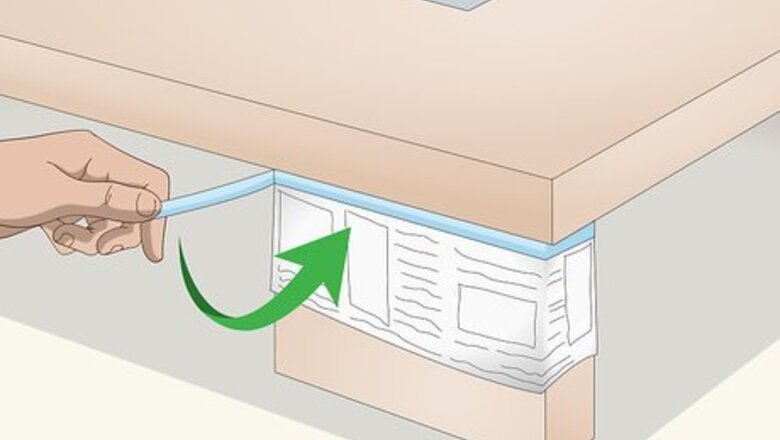
views
X
Research source
Adding wood grain to laminate wood furniture, tabletops, or walls will give them the appearance of expensive, high-quality oak. In order to grain wood, you’ll need to apply two layers of latex paint, and then use wood grain rocker and comb tools to create the appearance of wood grain on your MDF.
Preparing to Paint

Cover nearby surfaces with painter’s tape or newspaper. Since you don’t want surfaces other than the MDF to receive the wood-grain paint, place strips of painter’s tape over any surfaces (e.g. baseboards, air vents, etc.) that border the MDF. If you’re working indoors, lay down a few sheets of newspaper under the surface you’ll be painting. This will prevent paint from dripping down onto your flooring.
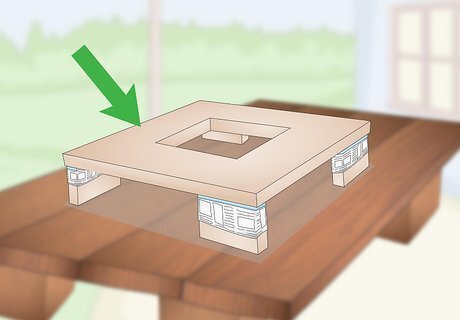
Paint outside if possible. If you’re applying wood grain to a section of MDF that can be moved, take the object outside and do your work there. You could work on a picnic table (or other outdoor table) or set up a couple of sawhorses and grain the MDF across those. If you’re graining a door, make sure to unscrew and remove the door’s hinges and knob.
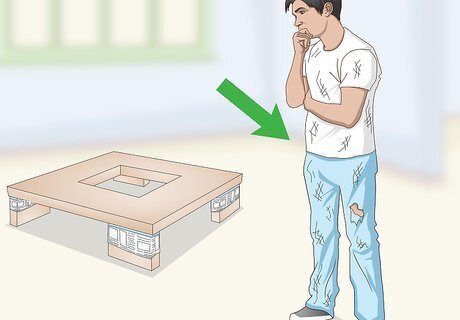
Wear old clothing and shoes. Since you’ll be applying multiple layers of paint during this project, it’s best if you put on old clothing that you don’t mind getting dirty. Paint stains clothing and is next to impossible to remove, so plan your outfit accordingly. If you dislike getting paint on your hands, you could also wear a pair of leather work gloves.

Sand the surface with fine-grit sandpaper. Make sure that the surface of the MDF is smooth and ready to receive the paint. Take a sheet of fine-grit sandpaper (between 120 and 220) and run it over the MDF. This will remove any rough spots or upright fibers on the MDF. Sand lightly in long, straight strokes and run the sandpaper over the MDF in the direction you plan to paint on the wood grain. Sandpaper should be readily available at any local hardware store. It’s typically sold either in single sheets or packages of 15 or 20.
Applying Paint

Select your latex paint colors. Choose two different colors of latex paint to apply to your MDF panel. One of the paints will function as the primer. (It’s recommended that you purchase a light tan color for this layer.) The other paint should also be latex; you’ll use this to make the glaze. The second color you select will determine what type of wood your faux grain resembles: if you’d like a darker grain that looks like oak, choose a darker brown paint. If you’d like a color closer to cherry, pick a dark red paint. Purchase your latex paints at a local paint store. The sales staff will be able to help you amount of paint that will be best suited to your project.

Apply a tan-colored latex primer paint. This primer will function as the background color of your wood graining, and it will complement whatever color you’ve chosen for your faux wood grain. Use a standard 2.5-in (6.3 cm) brush and apply the primer evenly over the entire surface of your MDF. Let this stand for about 30 minutes to dry. There are various options regarding what type of brush you use. With a latex primer, you can paint with a foam brush or a nylon-bristle brush. Both will be available at a local hardware store or in the paint section of a home-improvement store.
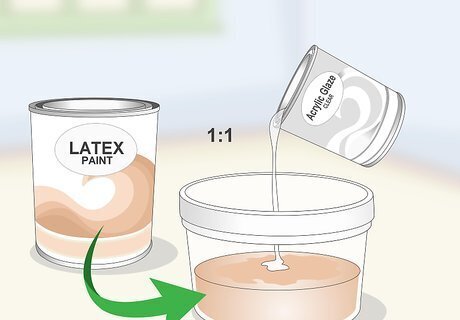
Mix your glaze. Take your second latex paint (the dark brown or dark red), and pour about 1 cup (237 mL) of this paint into an empty paint can or a large jar. Then, pour in an equal amount of a clear acrylic glaze. Stir the paint and glaze together using a wooden painter’s stick. If you use up the first 2 cups (473 mL) of glaze, make another batch. You can vary the amount of glaze depending on how large a surface area you need to cover.
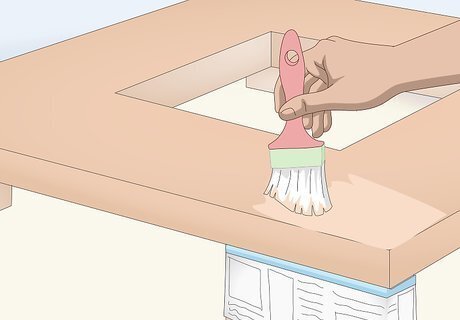
Paint your MDF with the glaze. Dip a small paint roller into your latex glaze mixture, and apply this to your MDF or drywall surface. In order to get a consistent, smooth coat, you’ll likely need to apply two or three layers of the glaze. Do not let the glaze dry between layers. Vary the placement of your roller strokes, so that the lines created by the edge of the roller are smudged out. Once your glaze is applied, start graining immediately. Don’t wait for the glaze to dry.
Graining the MDF

Drag the grain rocker across the surface of the MDF. The rocker is designed to give the appearance of wood grain when dragged through a paint glaze. Work in long vertical stretches, so that the wood grain pattern is linear and consistent from top to bottom. Once you’ve covered an entire vertical stretch, set the rocker back at the top of your MDF and begin again Make sure to add the grain in the same direction that you painted the glaze. Otherwise, you’ll be able to see contrasting directions between the faux grain and the glaze layer.
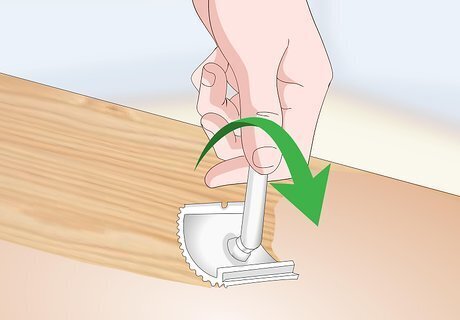
Roll the rocker while you’re graining the wood. Because the rocker has different textures and patterns at different points on its surface, you can vary the faux grain pattern by rolling the rocker while you’re graining. Use this technique to produce a variety of grain effects and make sure that no two stretches of faux grain look identical.
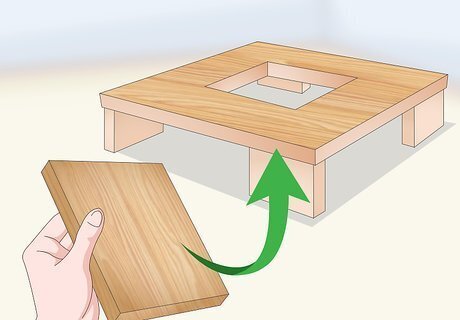
Model your faux grain after genuine wood. If you have access to specimens of actual wood grain (or can look up pictures online), you can use genuine wood grain as a model for your faux graining. If searching online, look for “oak wood grain” or “cherry wood grain,” for example. When graining your MDF, note that while no two sections of actual wood grain are identical, sections often have very little difference from one another. This will help you give your faux grain a realistic look. If possible, avoid producing obviously fake-looking wood grain.

Grain the edges with a wood graining comb. Once you’ve finished graining with the rocker, there may be small vertical portions on the edges of your MDF that haven’t been grained yet. Take a wood graining comb and run it through the latex glaze down the edges of your MDF to finish creating your wood grain effect. Then, let the glaze dry for about 30 minutes. On some graining combs, the two sides of have different amounts of spacing between the teeth, which allows you to create finer or coarser faux grain. Wipe the glaze from your rocker and comb once you’re finished graining.

Apply a varnish. Using a large foam or soft-bristle brush, apply a final layer of varnish to your grained material. This will protect the wood from damage, and will also bring out the wood grain that you’ve applied. Let the varnish dry for about 30 minutes. If you have trouble finding a suitable varnish, you can also use a polyurethane coating to protect the grained wood.


















Comments
0 comment